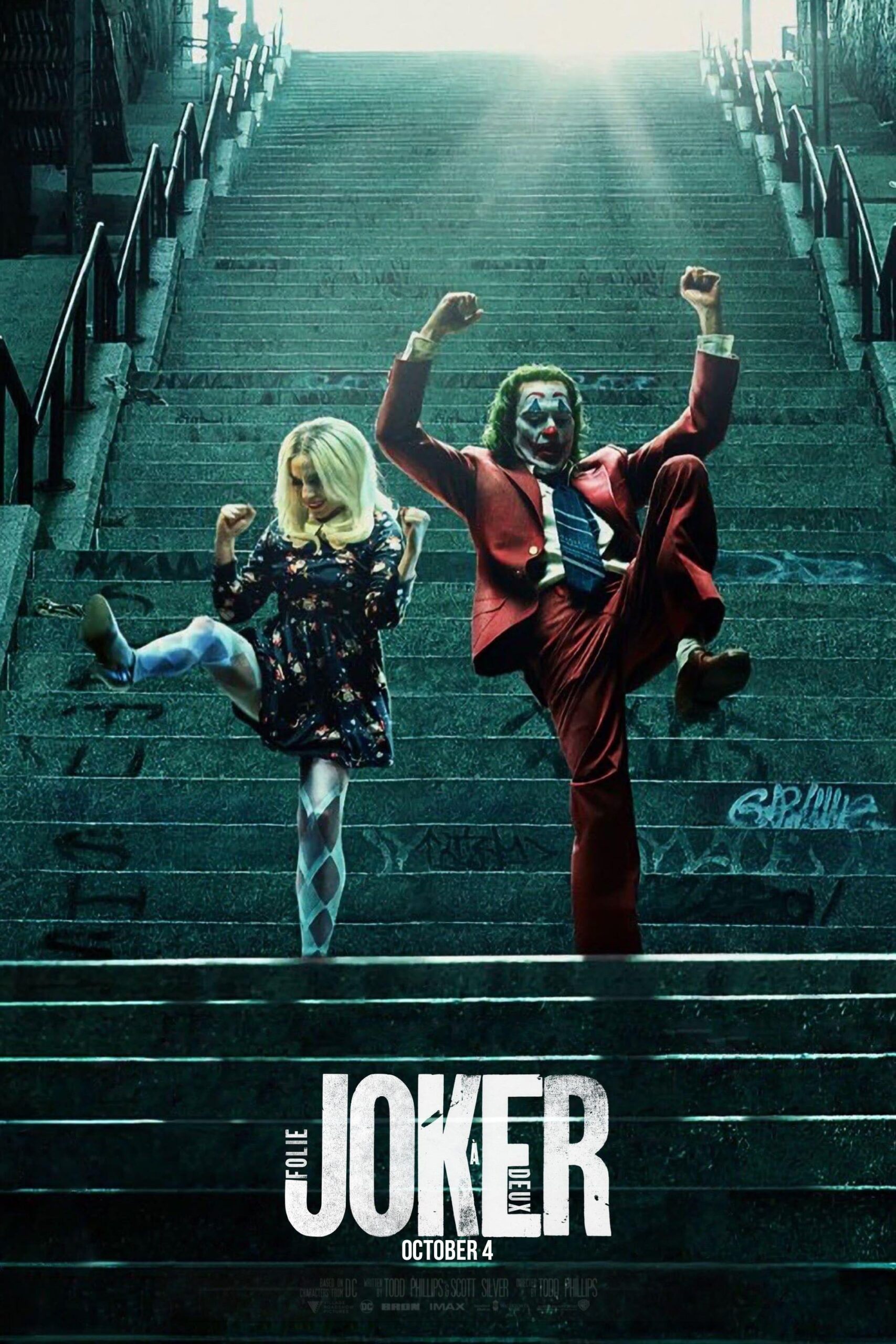
“Joker: Folie à Deux” struts into the cinematic limelight like a slightly deranged peacock, clutching its predecessors like a security blanket. You can practically hear Todd Phillips mumbling, “If it worked once, let’s just do it again!” This sequel, or rather spin-off masquerading as a sequel, leans heavily on the familiar tropes established in the original film. Instead of evolving, it seems more interested in rehashing old wounds and familiar faces.
Joaquin Phoenix returns as Arthur Fleck, now locked away in Arkham State Hospital, where he meets his match in Harley Quinn, played by Lady Gaga. Their relationship blossoms like a hothouse flower, but instead of the vibrant colors you might expect, it’s more a pastel palette of déjà vu. The film spends an inordinate amount of time mired in court scenes and interviews, where plot development goes to die. You could have a more stimulating time counting the ceiling tiles at Arkham.
Let’s address the writing. If “serviceable” were a person, it would be that friend who shows up to your party empty-handed and leaves early, making awkward small talk the entire time. The dialogue feels thin, as if someone stretched it like taffy but forgot to add flavor. You’ve got a few musical dream sequences stitched together with plot threads so fine they might as well be invisible. If the aim was to create tension and depth, Phillips clearly missed the mark.
Speaking of musical numbers, they’re undeniably the highlight of this dreary affair. Gaga and Phoenix infuse energy and spectacle into the film, injecting it with a much-needed adrenaline shot. Their performances leap off the screen, and you can almost forgive the sluggish narrative when they hit those high notes. But let’s not kid ourselves. These vibrant moments can’t sustain the film’s momentum. You find yourself looking at your watch, wondering if you left the oven on at home.
Clocking in at over two hours, “Folie à Deux” feels like a marathon of aimlessness. The pacing drags, like a tortoise racing a sloth. Without the psychological tension that gripped the original, this film meanders around like a lost tourist in Gotham, revisiting the same locations and events, and often within the same scenes. You start to wonder if they mistakenly left the script for a stage play lying around.
Character development? Forget about it. Arthur and Harley’s relationship lacks the sharp edges that could have turned it into something genuinely compelling. Their lives don’t appear to change much, aside from an awkward dance number here and a court appearance there. You’d think introducing a new character could spice things up, but Harvey Dent, played by Harry Lawtey, is as effective as a rubber knife in a gunfight. His role feels like a half-baked idea that never quite made it to the oven.
And then there’s Lady Gaga’s Harley Quinn. While she might have toned down her usual flamboyance, perhaps out of respect for Phoenix, it feels more like a missed opportunity. The film could’ve used a more riotous performance to balance out the subdued craziness of Phoenix. Instead, she meanders through her scenes, which makes you wonder if she forgot her own line.
Phillips’ direction showcases a stunning visual aesthetic. The cinematography, courtesy of Lawrence Sher, captures every moody shadow and flickering light with precision. Each frame is a painting, dripping with emotion and nuance. But here’s the kicker: without a compelling storyline to support these visuals, they ring hollow. You can’t live on eye candy alone, and this film proves it.
The use of music is intriguing, presenting it as an escape from the characters’ tormented souls. Yet, the song choices frequently miss the mark. You might find yourself scratching your head, wondering why they opted for that particular tune over countless other more appropriate options. The performances are well executed, but the material they have to work with feels like a missed opportunity.
“Joker: Folie à Deux” ends up being little more than an indulgent showcase for musical theatrics, lacking the gripping tension of its predecessor. You might walk away humming a tune or two, but you’ll also leave with the nagging feeling that you’ve just watched a beautifully framed empty box. The film offers a feast for the eyes, but the mind leaves hungry, craving substance over style.
In a cinematic landscape where sequels often struggle to find their footing, “Folie à Deux” feels more like a case study in how to squander potential than a worthy continuation of Arthur Fleck’s journey. It’s a spectacle that dazzles but ultimately disappoints, leaving you wishing they’d just left well enough alone. A score of 6/10 feels generous when the film seems to confuse spectacle with substance. This two-hour jaunt through the mind of a tortured comedian leaves you yearning for the raw intensity that made the original a modern classic.
Final Thoughts on Joker: Folie à Deux
In the kaleidoscopic chaos of *Joker: Folie à Deux*, one must ponder: does the glorification of madness serve as a mirror reflecting our own fractured society, or are we simply laughing at a tragic clown in a world that’s lost its sense of humor? Share your thoughts below—I’m eager to hear if you think we’ve crossed the line from empathy to spectacle. And while you’re pondering, why not explore more razor-sharp insights and musings in our other reviews?
image source: IMDB




